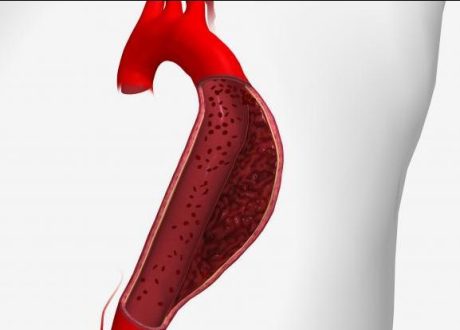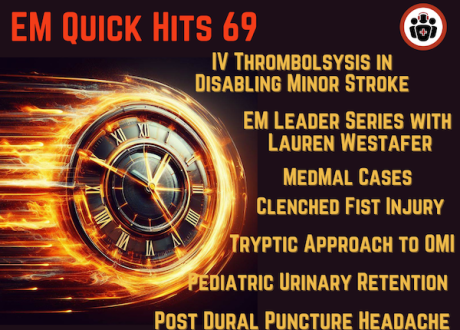Written by Millie Cossé
![]()
Among patients with infective endocarditis (IE), 39% of neurologically вАЬasymptomaticвАЭ patients had a cerebral embolic event (CEE) on neuroimaging, and a new surgical indication was established in 19% of these cases. CEEs were seen in 73% of neurologically symptomatic patients. But there were some issues with this studyвА¶
If an embolic event happens in the woods and nobody hears itвА¶
The central nervous system is the most common site of embolization for patients with infective endocarditis (IE), so should we obtain neuroimaging to look for it?
This study enrolled both prospective and retrospective cohorts of 573 patients with suspected or confirmed IE who had neuroimaging. Among neurologically symptomatic patients, 73% had at least one CEE on imaging (99% were ischemic lesions). CEEs were seen in 39% of neurologically вАШasymptomaticвАЩ patients. A new operative indication for valvular surgery was established in 22% of patients based on neuroimaging findings (according to the European Society of Cardiology Guidelines).
While neuroimaging is not necessarily useful for making a diagnosis of IE, it does have the potential to change management, especially given the high reported prevalence of CEEs among neurologically asymptomatic patients.
How will this change my practice?
The short answer is that it wonвАЩt. Maybe my threshold for obtaining neuroimaging for IE patients will be lower, but I have a hard time looking for asymptomatic lesions in otherwise non-surgical candidates when the only possible clinical benefit is the ability to offer valve surgery that may or may not improve survival and overall outcome. It is also important to note that all included patients were seen by clinicians who thought neuroimaging was clinically indicated. This is a classic example of sampling bias.
EditorвАЩs note: As mentioned, inclusion required neuroimaging, a form of confounding by indication, which likely led to inflated prevalence estimates. 876 patients did not have neuroimaging and were excluded. To do this right, all suspected or confirmed IE patients would need to be prospectively enrolled and imaged. My take: Look hard for CNS symptoms in suspected IE patients (headache, neurological deficit, altered mental status), and image those people.¬†~Clay Smith
Source
Role of Cerebral Imaging on Diagnosis and Management in Patients With Suspected Infective Endocarditis. Clin Infect Dis. 2023 Aug 14;77(3):371-379. doi: 10.1093/cid/ciad192.









